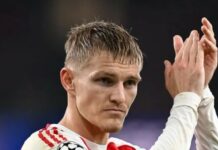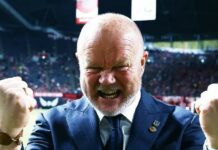For many in Trondheim, Rosenborg is more than just a football club. It is part of the city’s identity, a symbol of unity, and a common language that has united generations. For decades, the club was not just a team – it was an expression of Trøndelag pride. But what does Rosenborg really mean today, at a time when both football and the city itself have changed?
The Golden Age That Shaped a City
For those who grew up in the 1990s, Rosenborg was synonymous with success. Under Nils Arne Eggen, a phenomenon was created. The “Godfoten” philosophy, team morale and offensive style of play made RBK one of the most respected teams in the Nordic region. The interest in football at the time, and today via sites such as betting sites for football, shows how strongly Rosenborg still engages Norwegian supporters.
The evenings at Lerkendal during the Champions League were electric. Bayern Munich, Real Madrid and Milan came to visit, and for a while Trondheim was the center of European football. It wasn’t just sporting triumphs, but cultural moments that shaped a generation.
During this period, Rosenborg became a mirror image of the city itself – hard-working, close-knit, and without fear of meeting the greats.
When the past becomes the yardstick
But success creates expectations, and expectations can become a burden. In the last ten to fifteen years, Rosenborg has not been able to recreate its heyday. The club’s results have fluctuated, and the gap to the top – both sportingly and financially – has increased.
For many supporters, the relationship with the club has become more complex. The pride is still there, but also a hint of frustration. Rosenborg is still Trondheim’s pride, but it is no longer a given that the team dominates Norwegian football.
The city has grown and become more diverse. New generations do not have the same memories of the Champions League nights. For some younger Trøndelag residents, Rosenborg is more of a symbol of the past than a living part of the present.
A new Trondheim – a new Rosenborg
Trondheim in 2025 is not the same city as in 1997. Technology, education and business have changed the pulse of the city. At the same time, the cultural offer has exploded – festivals, music and e-sports compete for people’s attention.
In this landscape, Rosenborg must find its place again. The club is still the city’s most visible brand, but it fights for people’s time and commitment on completely different terms than before.
At the same time, there is an untapped potential in this change. Because in a time where everything is digitized, people are still looking for a sense of belonging. And few things create community like football. At Lerkendal, people across ages, professions and backgrounds gather – just like before. It’s still where the pulse of the city can feel most real.
Between tradition and modernity
One of Rosenborg’s biggest challenges is about the balance between inheritance and renewal. The club has always been proud of its roots – the Trøndelag style of play, local ownership and its own talents. At a time when football is as much about finances, media and commercial partnerships as it is about the game on the pitch, Rosenborg must also find its role. From local sponsorship deals to the interest in cash out and international rights, football has become part of a global entertainment market.
In recent years, the club has tried to modernize the structure, draw inspiration from bigger leagues and build better development systems. But for many supporters, the core still lies in what made Rosenborg unique: the proximity, the community and the offensive style of play.
This field of tension between past and future characterizes the club – and the city’s relationship with it.
Lerkendal as a meeting place
Even in periods of weaker results, Lerkendal is still a gathering point. The match days give Trondheim an energy of its own. The streets are filled with people in black and white, and the stands are still singing “It’s black and it’s white, and we’ll be there forever”.
For many, an evening at Lerkendal is as much a social ritual as a sports experience. It’s about the community, the smell of waffles, the reunion with old friends. Parents who take their children to matches tell stories about when Mini and Brattbakk wreaked havoc with European giants.
This is how the culture is continued. Rosenborg is not just the team on the pitch – it’s everyone who shows up, year after year, because it means something to be a part of it.
A club that still matters
Although Rosenborg no longer dominates the tables, the club’s importance in the city is still enormous. It gives Trondheim identity and pride, even in adversity. For many newcomers, the club becomes a gateway to understanding the city – a common reference to share with colleagues, neighbours and friends.
When Rosenborg wins, the whole city feels a little lighter. When the team is struggling, it feels like something is missing in the cityscape. That says everything about how deeply the club sits in the city’s collective consciousness.
Rosenborg is also an important player in society. Through grassroots work, school visits and support for local projects, the club continues to be a positive force. It is a part of the club’s identity that is often overlooked, but which is perhaps more important than ever.
The price – and power of nostalgia
Nostalgia can be both a gift and a hindrance. It keeps the memories alive, but can also make it difficult to look ahead. For Rosenborg, the challenge is about honoring the past without getting caught up in it.
Dreaming of new Champions League nights is a natural part of the club body, but the future will require new ways to build pride. Maybe it’s not about copying the 1990s, but about finding a new kind of greatness – one that suits both today’s club and today’s city.
Between hope and realism
Trøndelag people are known for being both realistic and proud. They know that football has changed, but they also know that the values from the “Godfoten” era still have power. Hard work, interaction and local anchoring will always be part of Rosenborg’s DNA.
When you see young players from the academy take their first steps at Lerkendal, it is as if the circle closes. Then you remember why Rosenborg means so much – because it’s always about more than just football.
The club is a link between generations, a reminder of what can happen when a community believes in something bigger than itself.
A symbol that is still alive
Today, Rosenborg represents both the glory of the past and the opportunities of the future. It is a symbol of pride and belonging, even in times of sporting adversity. Perhaps the club’s role in Trondheim today is not primarily about trophies – but about reminding the city of who it is.
Because even when the results fluctuate, the feeling is the same: When Lerkendal is lit up on an autumn evening, and “Rosenborg – my club” resounds from the stands, the Trønders recognize the pulse of something real. Which still means everything.






